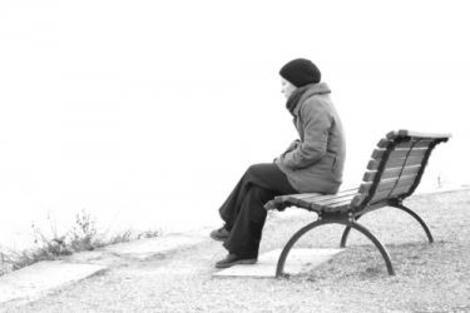Is it Depression or Seasonal Affective Disorder?
By Danielle Miller, GalTime.com

The infamous winter blues. I have yet to meet anyone who doesn't experience the winter blues at some level or another. This generalized melancholy is fairly common and it's easy to imagine why - It is dark when you wake up in the morning and dark when you leave work in the evening. You don't want to go out; you don't want to stay in. You find yourself on the couch most nights and weekends, wrapped in your faithful blanket, tissue box in hand, teary for reasons you can't pinpoint. People (myself included) who suffer from this condition, prompted by the onset of winter, tend to hibernate at home (as much as we 9 - 5'ers can) until as late as April or even May.
The medical term for what plagues us during these winter months seems exceedingly appropriate: Seasonal affective disorder (SAD for short). And though the arrival of symptoms may seem slow and benign, there are some definite telltale signs that announce seasonal depression loud and clear.
Related: Can Seasonal Affective Disorder Hurt My Relationship?
"Shortened days can create a sense of dread in many people," explains Manhattan-based psychotherapist Lisa Brateman , who specializes in depression and relationships and works with people who suffer from SAD. She identifies a myriad of symptoms that may be caused by this disorder: depression, anxiety, hopelessness, loss of energy, weight gain, loss of interest in your usual activities and social withdrawal.
"Symptoms come and go at about the same time each year (starting in early fall and lasting until mid-spring)," says Brateman. "It can be hard to tell the difference between non-seasonal depression and SAD, because many of the symptoms are the same," she explains. "The following criteria must be met for a diagnosis of seasonal affective disorder: You've experienced depression and other symptoms for at least two consecutive years, during the same season every year. The periods of depression have been followed by periods without depression."
Though seasonal depression is common, there are factors that may heighten your risk of experiencing SAD. Brateman recommends taking a look at your family history if you suspect you may be suffering from the disorder. "As with other types of depression, those with seasonal affective disorder may be more likely to have relatives with the condition."
Brateman also notes that location and gender are important factors to consider when diagnosing SAD. "Seasonal affective disorder appears to be more common among people who live far north or south of the equator and is diagnosed more often in women than in men, but men may have symptoms that are more severe."
Seasonal depression can be difficult to identify in yourself, especially considering the time of year. After all, there is so much going on during the winter months (holidays, etc.), of course we tend to be more stressed out and, at times, depressed. But if you start to pay special attention to what you feel and when you feel it, SAD can be easier to detect and treat. For sufferers of SAD, the correlation between the lack of light and a heightened sense of anxiety is palpable: our anxiety gets worse when it's dark out and things seem better when it's daytime.
Related: Will a Vitamin Make Your Antidepressant Work Better?
"Light therapy works well for most people with SAD. Researchers have proven that bright light makes a difference in brain chemistry," explains Brateman. "Bright light treatment is called phototherapy. You sit in front of a "light box" for half an hour in the morning. Another treatment is Dawn simulation. For this treatment, a dim light goes on in the morning while you sleep, and it gets brighter over time, like a sunrise." Brateman emphasizes that phototherapy should be used every day until the season changes and is often used in conjunction with talk therapy and sometimes antidepressants.
Though general depression and seasonal depression are technically different disorders, the two conditions share some of the same remedies. "As with any depression, it is important to resist the feeling to isolate. Surround yourself with people you enjoy," suggests Brateman. "If the depression is severe or if you are experiencing suicidal thoughts, consult a therapist immediately regarding treatment options or get help at an emergency room. A mental health professional can diagnose the symptoms and recommend therapy options. SAD can be managed with the proper care."
More from GalTime:
